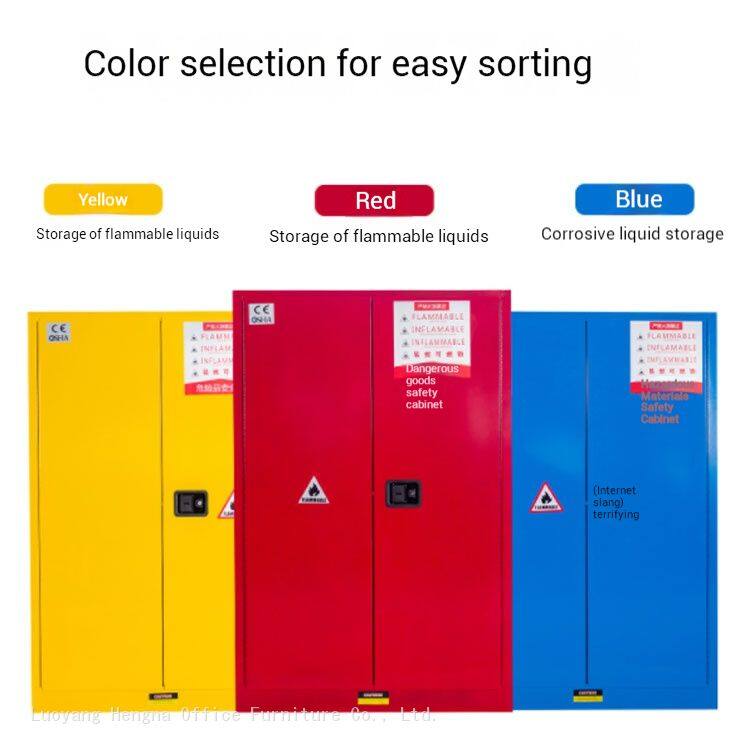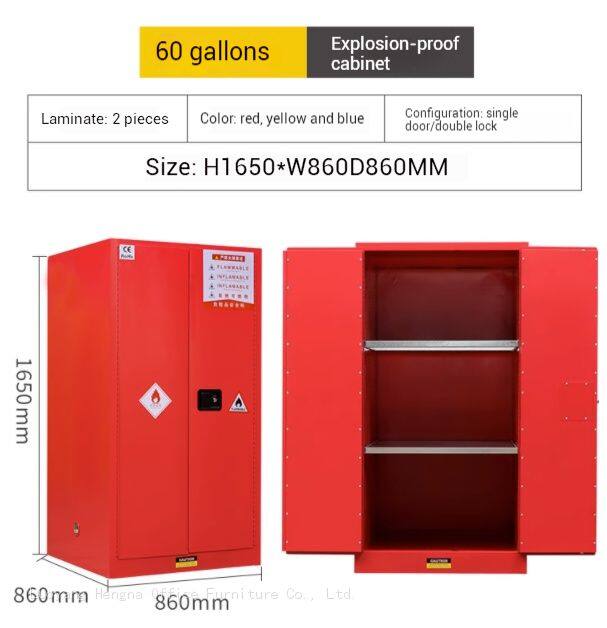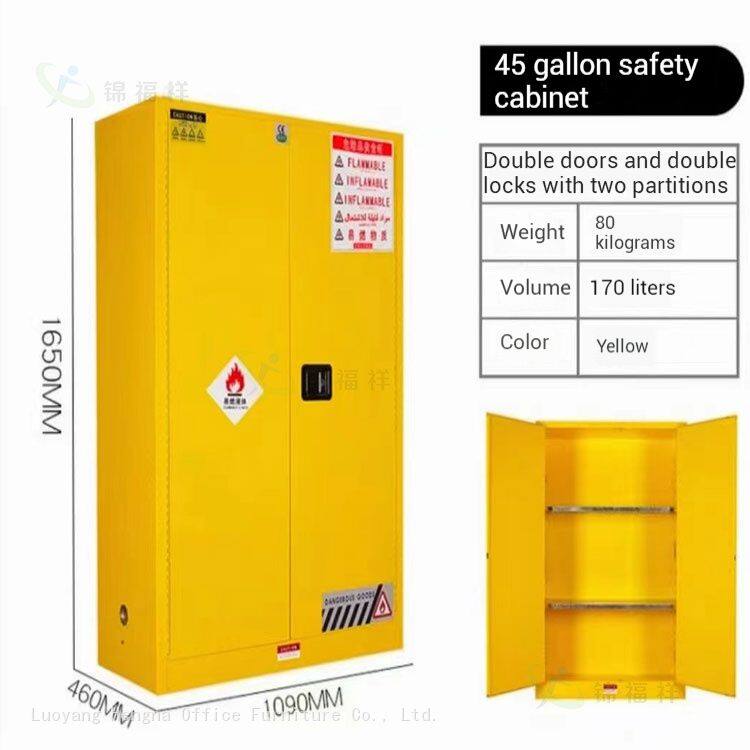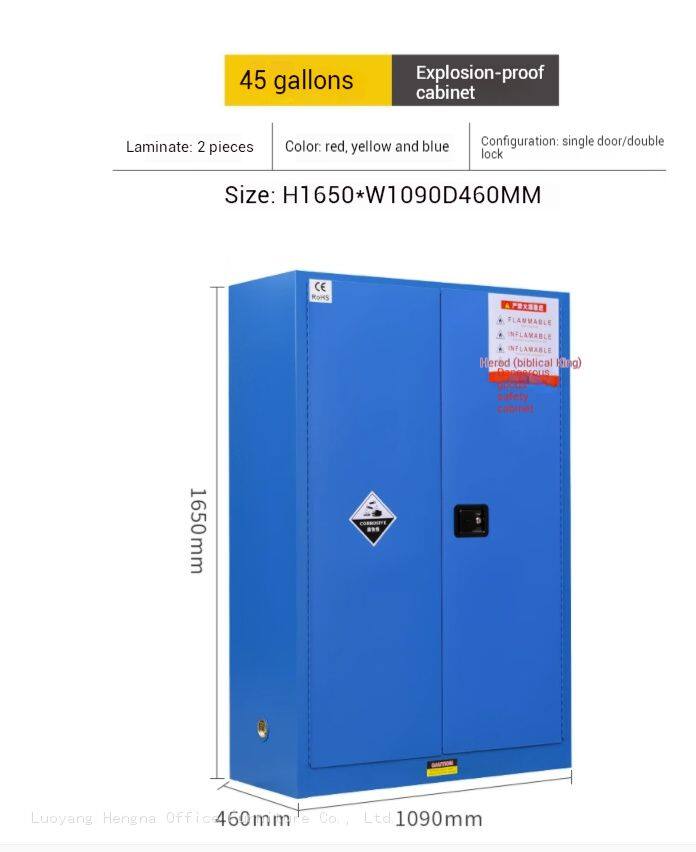Home > Blog > Water Treatment Safety: Secure Chemical Storage Solutions with Industrial Gallon Cabinets
-
 Sarah
Hi there! Welcome to my shop. Let me know if you have any questions.
Sarah
Hi there! Welcome to my shop. Let me know if you have any questions.
Your message has exceeded the limit.

Water Treatment Safety: Secure Chemical Storage Solutions with Industrial Gallon Cabinets
2025-11-06 13:53:16
Water treatment facilities handle numerous chemicals essential for water purification and disinfection, many of which are flammable and require specialized storage solutions to ensure both worker safety and environmental protection. The implementation of appropriate industrial gallon cabinets represents a critical safety measure that protects workers, facilities, and surrounding communities. This comprehensive guide explores the specific requirements for chemical storage in water treatment facilities and how proper implementation enhances safety while maintaining operational continuity.

Water Treatment Chemical Inventory
Water treatment processes utilize various chemicals including chlorine, ammonia, various acids and bases, and organic solvents that may be flammable or reactive. These chemicals are essential for disinfection, pH adjustment, corrosion control, and other treatment processes. The specific chemical inventory varies based on water source, treatment requirements, and regulatory standards, making customized storage solutions necessary for each facility.
Chemical inventory management must consider both the quantities used daily and the safety stock required for continuous operation. Water treatment facilities typically maintain several days’ worth of chemicals on-site to ensure uninterrupted service during supply disruptions. This inventory requirement influences the size and number of storage cabinets needed and their placement within the facility.
Regulatory Compliance for Water Facilities
Water treatment facilities must comply with multiple regulatory frameworks including EPA’s Risk Management Plan (RMP) rule, OSHA’s Process Safety Management (PSM) standard, and state environmental regulations. These regulations establish specific requirements for chemical storage, handling, and emergency response planning. Water treatment facilities must understand these various requirements to ensure comprehensive compliance and avoid potential penalties.
Regulatory compliance considerations extend to documentation requirements, emergency planning, and community right-to-know programs. Water treatment facilities must maintain comprehensive records of chemical inventories, storage locations, and safety procedures. These records must be readily available for regulatory inspections and emergency response planning. Proper storage cabinet implementation supports compliance with these various regulatory requirements.
Chemical Segregation and Storage Strategies
Water treatment chemicals must be segregated based on their chemical properties and potential reactions with other substances. Flammable storage cabinets should be organized to prevent incompatible chemicals from being stored in proximity, reducing the risk of dangerous reactions. Some water treatment chemicals may react with cabinet materials or other stored substances, requiring specialized storage solutions.

Storage strategies should consider the frequency of chemical use and the workflow patterns of treatment plant operations. Frequently used chemicals should be stored in easily accessible locations while maintaining safety protocols. Some water treatment facilities implement just-in-time delivery systems that reduce on-site storage quantities, but emergency backup supplies still require proper storage in approved cabinets.
Ventilation and Air Quality Management
Water treatment facilities often have specific ventilation requirements due to the nature of chemicals used and treatment processes. Flammable storage cabinets should be integrated with the facility’s ventilation system to ensure adequate air exchange and vapor removal. Cabinet vents should be positioned to promote proper air circulation while preventing flame entry during fire incidents.
Air quality management considerations extend to monitoring for chemical vapors and potential leaks. Some water treatment facilities implement gas detection systems that can alert staff to dangerous vapor accumulation around storage areas. The integration of cabinet ventilation with the facility’s air quality monitoring system ensures comprehensive protection for workers and the surrounding environment.
Security and Access Control
Water treatment facilities are critical infrastructure that may require additional security measures to protect against vandalism, terrorism, or unauthorized access. Flammable storage cabinets should incorporate security features that prevent unauthorized access while maintaining accessibility for authorized personnel. This balance between security and accessibility is particularly important for facilities that operate 24/7 or have limited staffing.
Security considerations may include electronic access control systems, surveillance cameras, and integration with facility security networks. Some water treatment facilities implement inventory management systems that track chemical usage and access, providing additional security and accountability. The selected security features should align with the facility’s overall security assessment while supporting efficient operations.

Environmental Protection and Spill Containment
Water treatment facilities have a special responsibility to protect the environment from chemical spills and releases. Flammable storage cabinets should be equipped with spill containment features that prevent leaks from reaching soil or water sources. Some facilities implement secondary containment systems that provide additional protection against spills and environmental contamination.
Environmental protection considerations extend to emergency response planning and coordination with environmental agencies. Water treatment facilities should maintain spill response kits with appropriate absorbents, neutralizers, and personal protective equipment. Regular training on spill response procedures ensures that staff can respond quickly and effectively to accidental releases, minimizing environmental impact and ensuring regulatory compliance.
Integration with Treatment Processes
Chemical storage should be integrated with water treatment processes to ensure efficient operations while maintaining safety. Storage cabinet placement should consider the flow of chemicals from storage to treatment areas, minimizing transport distances and potential exposure risks. Some water treatment facilities implement automated chemical feed systems that connect directly to storage cabinets, reducing manual handling and exposure risks.
Process integration benefits extend to monitoring chemical usage and inventory levels. Some facilities implement smart storage systems that provide real-time data on chemical consumption and automatically trigger reordering when levels reach predetermined thresholds. These technological capabilities enhance operational efficiency and support just-in-time inventory management while maintaining safety standards.
Maintenance and Operational Considerations
Water treatment facilities operate continuously, requiring storage systems that can withstand constant use and harsh environmental conditions. Flammable storage cabinets should be constructed with materials that resist corrosion from water treatment chemicals and humidity. Regular maintenance procedures should be established to ensure continued performance and compliance with safety standards.

Operational considerations extend to supporting various staffing patterns and shift work schedules. Storage systems should be accessible to authorized personnel across different shifts while maintaining security protocols. Some water treatment facilities implement standardized operating procedures for chemical access and storage that ensure consistency regardless of staffing changes or operational variations.
Community Safety and Emergency Planning
Water treatment facilities must consider community safety in their emergency planning and chemical storage strategies. Flammable storage cabinets should be positioned to minimize potential impact on surrounding communities in case of incidents. Some facilities coordinate with local emergency responders to develop comprehensive response plans that address various emergency scenarios.
Community safety considerations extend to communication and notification systems. Water treatment facilities should establish protocols for notifying nearby residents and businesses in case of chemical incidents. The integration of storage cabinet emergency procedures with community emergency response plans ensures comprehensive protection for both facility workers and surrounding communities.

Tags: Water Treatment Safety, Secure Chemical Storage Solutions, Industrial Gallon Cabinets

